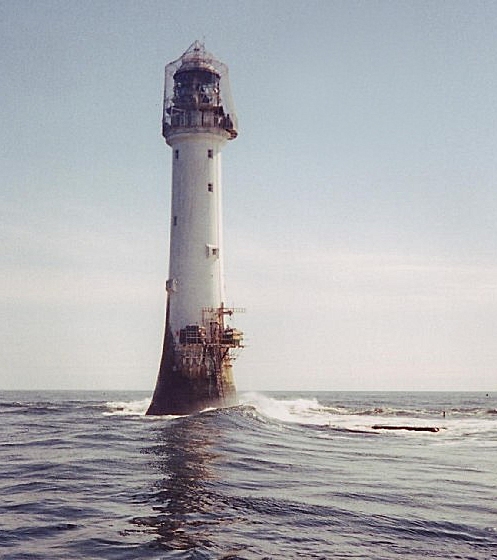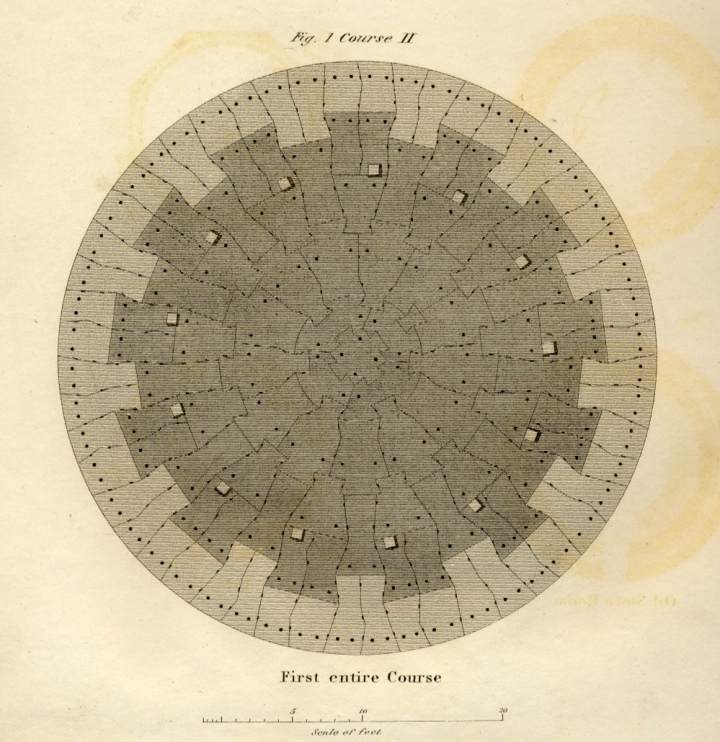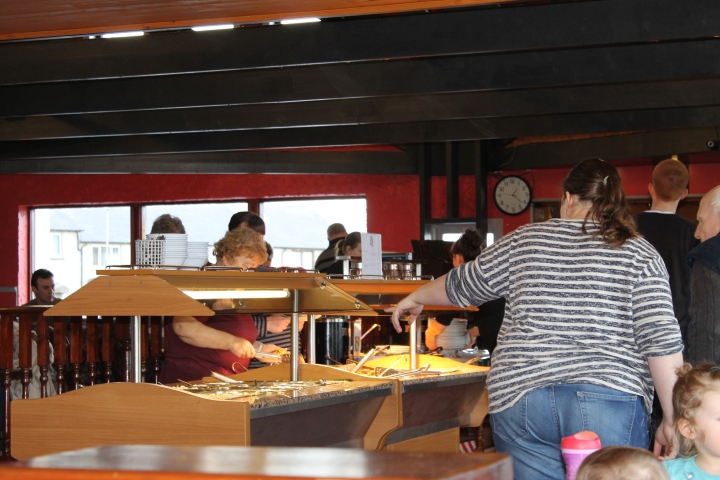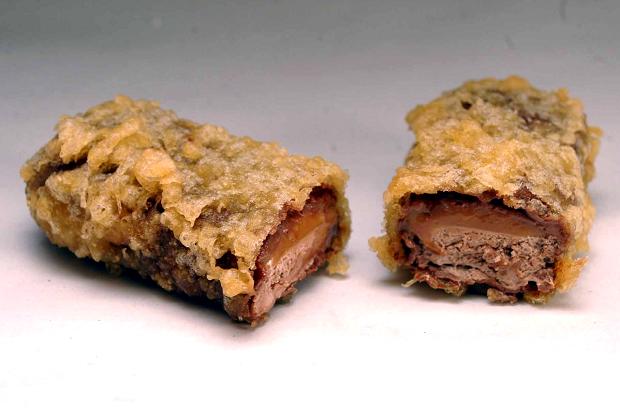Now this was human labour, toil, and ingenuity at its finest. No, not the all-you-can-eat buffet of deep fried food oblivion I was about to step into. I’ll get to that. But first let me tell you about the Bell Rock Lighthouse, a lone giant sitting 11 miles off the coast of Arbroath, Scotland steering ships safely to shore for over 200 years. That makes it the oldest lighthouse in the world.
For over 200 years, this piece of early 19th century technology has withstood raging North Sea gales and saved countless numbers of lives. And I had just learned of the men and architectural design that had made it possible.
It’s 1804 and the Bell Rock, a stony outcrop, has sunk the warship HMS York, leaving no survivors. With an estimated six wreckages a year, the people of Arbroath need a solution. Six years before, Scottish engineer Robert Stevenson proposed building a lighthouse and now he gets the go ahead as chief assistant to John Rennie. The lighthouse will stand 116 feet tall, comprised of a jigsaw design that requires each piece of stone to be individually carved, carried, and laid 11 miles off shore on a precarious rock that can only be reached four hours a day at low tide…
Each stone will interlock, like a puzzle piece into a puzzle, this way providing the structural integrity necessary to see the building through centuries.
At first the team assembled to build the structure lived on a ship, rowing an hour each way to and from the rock for the few hours they could work before the tide rolled back in. Digging with pick-axes into the solid rock, their progress was slow, and when they almost lost their lifeboat, Stevenson came up with a better plan. He designed a structure for them to live on the Bell Rock.
The first season was dedicated to building the foundations and legs of this dwelling, called the Beacon. Leaving for the winter, the crew doubted it would survive the harsh winter months. When it did, their renewed confidence in Stevenson pushed them through the next four years to completion.
Sadly, the project did not complete without a few casualties, but in 1811, Stevenson’s new lighting system was fitted and the lighthouse went into service.
What work! What brute strength! What courage! And here we feel we’ve worked when we’ve sat on our backsides for eight hours staring at a screen!
Filled with awe and admiration for the human species, David and I wandered across the street from the Bell Rock Museum to the Restaurant.
And this is when we start talking about deep fat fried food. An all-you-can-eat-buffet of the stuff, to be specific.
David’s eyes lit up at once. What man can resist all-you-can-eat? But I was wary, “It looks like mostly deep fat fried food.” “It’ll be a cultural experience!” David cried enthusiastically, pulling me in.
Now, by cultural experience, David wasn’t referring to the all-you-can-eat-buffet. No, we American’s can duly claim this for our own.
Las Vegas publicity and entertainment manager, Herbert “Herb” Cobb McDonalds, has been credited with this mighty invention in the year 1956, which writer William Pearson later described as the “eighth wonder of the world.” He was specifically referring to the City of Light’s midnight buffets, for “We marvel at the Great Pyramids, but they were built over decades; the midnight buffet is built daily.”
No, David was referring to deep fat fried food, which I previously would have put down as another American preoccupation. County fairs are full of strange, deep fried foods, and the American South is characterized as special lovers of the stuff. But apparently, so are Scots.
So much so, that Scotland made headlines in 1995 with its deep fat fried Mars bars. This kicked off a trend with the US frying up Snickers bars and New Zealand deep-frying Moro bars, while Duns, a Scottish border town took up Cadbury Cream Eggs for the same venture. Indeed, certain parts of the world seem to delight in their deep fat frying culinary inventions. A colleague told me, “I think Scots pride themselves in deep-frying just about anything.”
This was a cultural experience indeed. Looking around me, I would have guessed I was in the American deep south, where I am told people are obese and deep frying all sorts (actually, America’s top 10 fattest cities are in the mid-West, and I don’t actually know what role deep frying plays in this). But here I was in Scotland, where the culinary practice of deep frying seems to be just as popular as at any American County Fair. It turns out, in fact, that while the UK is the most obese country in Europe, Scotland has the highest rates of deaths from heart disease in the UK. Actually, heart disease is the main cause of death in Scotland.
My interest was piqued. What is the history of deep frying food in Scotland? When did this take off and why does it appear to be so popular?
I’ve done my research but with little success. The Internet turned up little that was useful, apart from a Scotsman living in Australia who was deeply disturbed when he read a guide book to Scotland describing Scottish cuisine as all things deep friend, and someone else musing that the deep frying craze may be a backlash to the American health craze. The best academic reference I got was a book about the history of fish and chips. So I checked it out of the library, but even that provided little insight into my particular question about deep frying.
What I learned is that fish and chips seem to have begun separately as fishies and chippies and at some point were married into what continues to be a British culinary classic. John K. Walton, author of Fish & Chips: The British Working Class 1870 – 1940, claims that this union took place in the 1860s in the towns around Oldham in Lancashire and in London. The fried fish trade, as separate from the fried potato trade, may have originated in Soho, London by the Jewish Community there.
But tracing the history of street food, or food in general, is actually surprisingly difficult. If anyone has any insight they’d like to share with me, please do! As of now, I’m afraid that I can provide you with no answer, for I continue to search for the origins of deep fat frying.
If Mr. Walton is correct, however, the men of Stevenson’s crew in the early 1800s may have sampled the delights of fried fish and fried chips but not the two together. So perhaps they would have been very impressed with this buffet indeed.
For my part, I went from learning about a great human feat of ingenuity to being surrounded by fat people eating a pineapple that had been submerged in boiling oil so that I could barely taste the juicy goodness of the original fruit. But hey, all in a day of historical and cultural learnings when you’re living abroad in Scotland!






